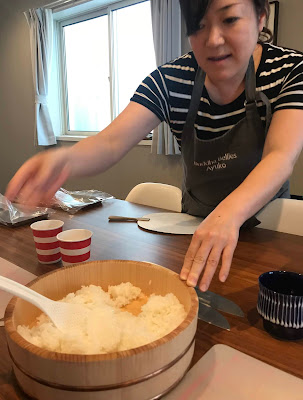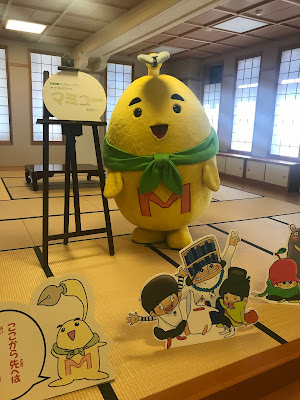Content Curation is king
When asked about the worst words of 2013, The Atlantic’s Richard Lawson responded that he hated the usage of curation. His objection to the word was that it has
shifted far from its original high-art meaning:
"It's a reappropriated term that used to mean something good - putting lovely and interesting things in a museum! - but now denotes a technique of cobbling together preexisting web content and sharing it with readers/followers/whomever. In other words, linking to things.”
And he’s got a point. Social media means we’re all curators
now. Anyone who signs up for a Twitter account is
curating a stream of links and cat videos for their followers and friends.
But personalised curation is a response to the
information overblown that the web has created. Social media has given many
users a way to make sense of this by looking to trusted curators: their
friends. Learnist is a good example of social media curating lessons as users learn from their friends about topics that interest them because searching for themselves is just too hard.
You are a channel
By sharing something on LinkedIn you’re
showing off your influences and interests. And most of us have diverse
interests - rather than a single interest obsessive we’re made up of different
facets. This blog, for example, wanders through my various interests from
travel to literature to food to word nerdery to AC/DC.
Most readers will be interested in only some of these topics and will surf in and out of this channel based on their interests, but there may be a niche that enjoys all of them. Good content knows its niche and its audience. But a good curator knows how to put together a diverse mix that will inspire, inform or entertain.
Most readers will be interested in only some of these topics and will surf in and out of this channel based on their interests, but there may be a niche that enjoys all of them. Good content knows its niche and its audience. But a good curator knows how to put together a diverse mix that will inspire, inform or entertain.
Effective curation
So get to know your audience. Dig through
analytics to find what they’re clicking on, what they’re reading and how quickly
they’re leaving your site. Some content strategists say it’s
as simple as chasing traffic, repeating what has worked in the past and feeding
the trolls.
But some content is not going bring big
stats. It might be informative. Rather than the long tail (which starts with popularity) it may just persist as users return to it very
gradually over time. Some content has a longer tail than others. One of the
most popular pieces posts on this blog is about how to become a Lonely Planet author – a generic post about what the guidebook publisher is looking for when they get
you to write a sample chapter. It did okay at first push, but there’s always a steady group of people wanting
to become travel writers so this post continues to get readers 3 years later.
Curate for Topicality?
What’s interesting about this how-to post is
that it gets new peaks when there’s a recruitment drive or a travel writing
festival. Some content is durable enough that it can be surfaced again to find
a new audience when the zeitgeist comes around again. Amazeballs inclusion in the Collins dictionary
meant that my post got a few more readers. Oddly, it also found spammy
comments about dentists (at the risk of being targetted by dental associations I’ve left them up there for your reference), because
the Amazeballs breakfast cereal sounded like a tooth rotter.
On a large website curation for topicality
means looking at what’s making the news or what’s happening seasonally and
putting it on your homepage. It can also mean looking at what your users are searching for and finding ways to surface it. In Twitter it means watching the hashtags for
debate de jour and finding your content that advances the discussion. Beware of
bumbling into social media trying to push your years-old content that wasn’t
worth reading in the first place. Content needs to be durable to get a second,
third or fourth run.
Disposable content
This doesn’t mean that all content has to
be eternal. Many people argue that news often makes a big splash and then sinks to the
bottom of a website never to be heard of again. You can’t
curate beyond that moment. But then again there is the “first draft of history”
approach to news? Doesn’t some news have a long tail?
In truth no content should be disposable.
It can be refreshed and re-worked to be given a new lease of life or a new
angle. It should be maintained to add new details or events that have happened
since the original posting. Sometimes just the addition of new comments to blog post
can be interesting enough to curate it to the surface again - think of those
Twitter posts that say “Our
post on breakfast cereals sure is creating debate from dentists.” Create
content to last and think of how it could be re-used and brought back to life.
But isn’t a curator just a high-falutin editor?
Yes and no. Old-style news editors can be great curators because they have the
sense of a story, the antennae up to see what’s happening in the world and how
their story will find a readership or create a debate. Good print editors should are able to curate a home page because a magazine front page has the same
competing priorities and need to appeal to users. Good editors also influence
their publications with their personalities and peccadilloes – just like a
social media account that holds your attention.
But editors may not get the need to
classify using metadata. Or the need for longevity of content when you're chasing topicality. Curation is about aggregation, knowing when to source content from elsewhere and blending it with your own content. And, as Lawson says, the tools are now available to all which creates more competition for eyeballs and means curation is becoming a basic skill on the web.




Nice piece. The evolution of the meaning of curation is simply a consequence of everyone's newfound ability to find an audience - those complaining about it fail to consider the consequences of low-friction publication by individuals - another long tail, this one of publishers, each with their own niche defined by their personal interests.
ReplyDeleteExcuse the plug, but you might find NewsWhip Spike interesting, both for content curation and general interest. It sources the news being shared around the social web fastest in real time, interesting for trendspotting, and to get an idea of what drives the share online. You should check it out. http://spike.newswhip.com
Cheers
Tom
Thanks for your great post - I've actually curated it on www.contentcurationmarketing.com. I wanted to share an asset I created for folks who are getting started with content curation and are looking for examples of people doing it well - http://www.curata.com/resources/ebooks/content-curation-look-book/ thanks and keep curating!
ReplyDeleteThanks for the comments (and plugs), Tom. Newswhip looks like a perfect example of curation Agree with "We humans have an instinct for good stories, and we know the news stories worth sharing with our friends."
ReplyDeleteJessie, will download the look book and give it a read. Looks like it has some great examples - Adobe, Intel and more. Thanks for sending it on.
I'm your niche, George.
ReplyDelete